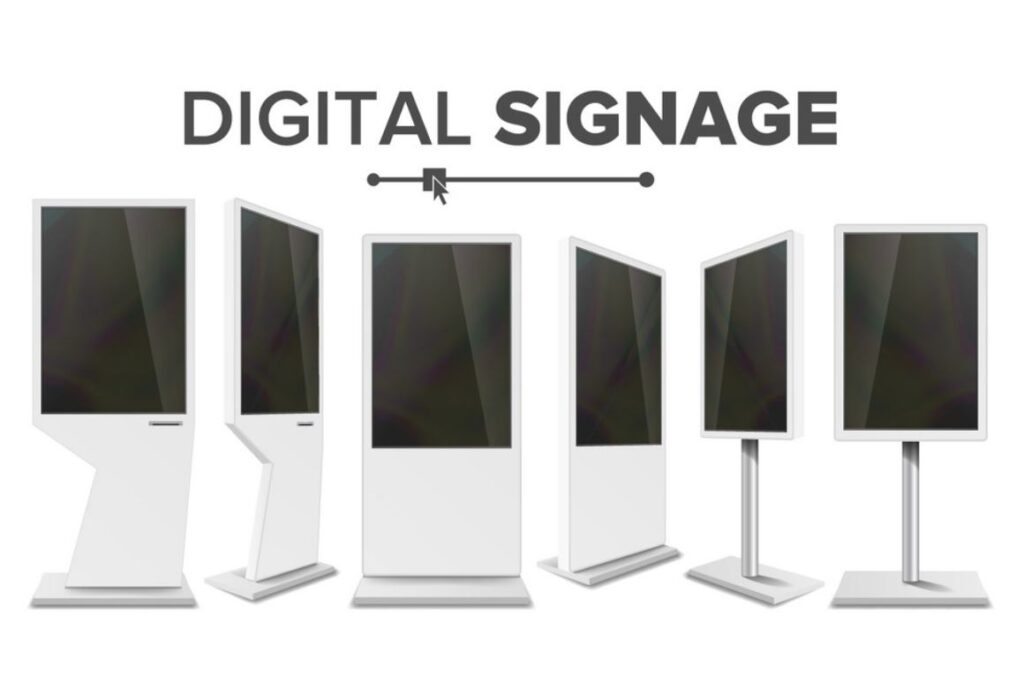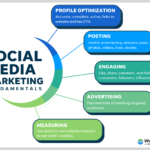In today’s digital age, digital signage has become a powerful tool across various industries. Businesses are leveraging it to increase customer engagement, convey information, and enhance the overall experience. From retail stores to corporate offices, the versatility and effectiveness of digital displays make them an invaluable asset. Let’s explore the six industries that benefit the most from digital signage. Get a powerful digital signage player for stunning, dynamic displays. Ideal for businesses, with easy setup and flexible content control.
1. Retail Industry
The retail sector has seen one of the highest adoptions of digital signage. Here’s why:
- Enhanced Customer Experience: Digital screens captivate the attention of shoppers, displaying dynamic content that can showcase new products, special offers, and personalized promotions. By using interactive screens, retailers can provide a more immersive shopping experience, driving both in-store traffic and sales.
- Real-Time Updates: With digital signage, retailers can instantly update promotions or product information based on real-time data. This flexibility allows stores to respond to inventory changes, special events, or seasonal promotions without the need for costly print materials.
- Brand Building: Digital displays help reinforce a brand’s identity by delivering consistent, visually appealing content. This is particularly beneficial in a crowded market where standing out is crucial.
In conclusion, digital signage in retail is not just a display; it is a strategic marketing tool that can transform the customer journey and boost revenue.
2. Hospitality Industry
The hospitality sector, including hotels, restaurants, and resorts, reaps significant benefits from implementing digital signage:
- Improved Guest Experience: Digital screens in hotel lobbies, restaurants, and bars provide guests with useful information like check-in details, restaurant menus, and local attractions. This not only enhances guest satisfaction but also streamlines communication.
- Promotional Opportunities: Hotels and restaurants can use digital signage to promote special events, new services, or exclusive offers. For example, a restaurant can highlight its daily specials or a hotel can showcase spa services, increasing upsell opportunities.
- Wayfinding Solutions: Digital signage provides clear and intuitive navigation, helping guests find their way around large properties or complexes. This reduces confusion and improves the overall experience, especially in large hotels or convention centers.
The hospitality industry relies on digital signage for its versatility in enhancing guest engagement and driving additional revenue streams.
3. Healthcare Industry
Digital signage has made a significant impact in the healthcare industry, providing critical information to patients, visitors, and staff:
- Efficient Communication: In hospitals and clinics, digital signage serves as an efficient tool for conveying important messages, such as health tips, safety protocols, or appointment schedules. This helps reduce perceived wait times and keeps patients informed.
- Patient Education: Healthcare facilities can use digital screens to educate patients on medical procedures, wellness tips, or medication instructions. This proactive approach can help improve patient outcomes and satisfaction.
- Wayfinding Assistance: Navigating a large hospital can be challenging. Digital wayfinding screens offer easy-to-follow directions, reducing patient stress and ensuring timely arrival for appointments.
Overall, digital signage in healthcare not only enhances patient experiences but also improves operational efficiency.
4. Corporate and Office Environments
In corporate settings, digital signage plays a crucial role in internal communication and employee engagement:
- Enhanced Internal Communication: Digital signage in offices helps convey important announcements, updates, or event notifications. This keeps employees informed and aligned, fostering a more connected workplace environment.
- Real-Time Data Display: For companies focused on data and performance metrics, digital dashboards display live updates on key performance indicators (KPIs), sales targets, or project statuses. This transparency motivates employees and helps track progress.
- Corporate Branding: Digital signage can also be used to reinforce corporate culture and brand identity through visually appealing content that showcases company values, achievements, and milestones.
The use of digital signage in corporate environments is a strategic approach to creating a dynamic and informed workplace.
5. Education Sector
The education industry is leveraging digital signage to transform learning experiences and campus communications:
- Enhanced Learning Experience: Digital screens in classrooms, auditoriums, and libraries provide a dynamic way to present information, making learning more engaging for students.
- Streamlined Campus Communication: Universities and schools use digital signage to broadcast important announcements, event schedules, and emergency alerts. This ensures that students, faculty, and staff are always up to date.
- Wayfinding and Campus Information: Large campuses benefit from digital wayfinding kiosks that help students and visitors navigate buildings, find classrooms, or locate event venues.
By integrating digital signage, educational institutions can create a more interactive and efficient learning environment.
6. Transportation Industry
The transportation sector, encompassing airports, train stations, and bus terminals, relies heavily on digital signage for clear and timely communication:
- Real-Time Information: Digital displays provide up-to-the-minute information on arrivals, departures, and delays. This is crucial for travelers who need accurate, real-time updates to plan their journeys effectively.
- Advertising and Promotions: Transportation hubs are ideal locations for digital advertising. High-traffic areas, such as airport terminals or subway stations, utilize digital signage to showcase advertisements from various brands, maximizing exposure.
- Enhanced Passenger Experience: Digital signage contributes to a smoother travel experience by providing wayfinding information, guiding passengers through complex terminals, and reducing confusion.
Digital signage in transportation not only improves communication but also enhances the overall efficiency and experience for passengers.
Conclusion
The industries highlighted above are just a few examples of how digital signage can be effectively utilized. Its versatility, dynamic content capabilities, and ability to provide real-time updates make digital signage an indispensable tool across various sectors. As businesses continue to innovate and look for ways to enhance customer experience, digital signage will remain a powerful asset.



